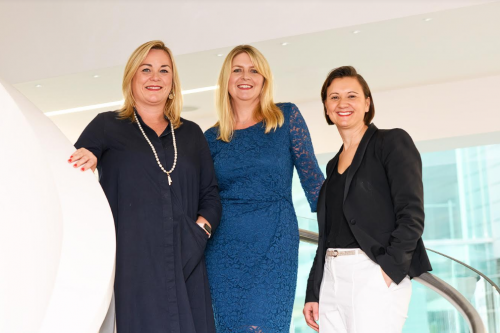First Female Lawyers Are Still Making a Difference 100 Years On

Karen Procter, Head of Corporate Team and Deputy Head of Office, Shoosmiths Manchester, discusses the issues surrounding gender equality

Karen Procter
Today in 2019 the year Shoosmiths celebrates 10 years of doing business in Manchester, we also look back and commemorate the centenary of women in the law.
Gender equality and the ongoing bid to achieve it remains a key issue for the legal profession today. There is still much that needs to be done when it comes to ensuring women and men are represented equally in terms of pay, position and prospects in UK law firms.
An important part of helping to strike a balance and pave the way for female career progression is to shine a spotlight on successful role models. At Shoosmiths Manchester, where we are approaching an equal split of male and female partners – with 43% female and 57% male, we’re very aware of the need to celebrate female achievement.
This is reflective of my own personal journey at Shoosmiths. Since joining the firm in 2010, I have been promoted twice, whilst working part-time and fitting client service around family life – a husband, two children and a dog.
Shoosmiths provides a supportive environment offering agile and flexible working to staff at all levels. Despite corporate finance being one of most male dominated areas of the legal profession, as a partner in the sector I now lead a team of 12 at the firm, whilst the banking team is headed by Liz Sweeney and the local Restructuring team is led by Sarah Teal. With women in all three local leadership roles in corporate, we really are bucking the trend.
All of us have been with the Manchester office for a number of years and are very aware of our responsibility to be strong role models. And in 2019, we believe we have a unique opportunity to remember and give thanks for the pioneering women who were not only the first females to become lawyers but who also broke down the barriers to the legal profession, so that millions of us could follow in their stead.
One hundred years ago, after many years of lobbying and numerous legal challenges from female campaigners, Parliament finally passed the Sex Disqualification (Removal) Act 1919. This provided that, “A person shall not be disqualified by sex or marriage from … entering or assuming or carrying on any civil profession or vocation, or admission to any incorporated society,” and made it possible for women to become solicitors.
The Act became law on 23 December 1919 and a week later, on 31 December 1919, the first female justice of the peace – Ada Summers the Mayor of Stalybridge, which happens to be the Greater Manchester town where I grew up, was sworn in.
The First World War had helped to change attitudes, as had the suffragist movement. Just a year earlier, in 1918, women had won the right to vote (for women over the age of 30 who were either a member or married to a member of the Local Government Register). Manchester’s own Emmeline Pankhurst, leader of the suffragettes, had been instrumental in bringing this change about. Her daughters attended Manchester High School for Girls and one of them – Christabel Pankhurst, obtained a first-class law degree from the University of Manchester. Being a woman, however, Christabel was not allowed to practice law. She had wanted to be a barrister like her father, and it was partly her being refused admission that motivated her to campaign alongside her mother.
In 1922, the very first female solicitor, Carrie Morrison was admitted to the roll. This was an historic milestone, but it wasn’t until 1981 – almost 50 years after the first female solicitors were admitted, that Fiona Woolf became the first female partner at a City firm (CMS).
The legal sector has lagged far behind others in terms of being progressive. The rule that banned female barristers from wearing trousers in court wasn’t abolished until the mid-1990s and, when I qualified in 1998 it was still considered “risqué” for women to wear trouser suits in the office!
Today, while we’ve come a long way, in no small part thanks to the tenacity and bravery of the trail-blazing women who fought for the right to practice law 100 years ago, there is still plenty of room for improvement.
Both the industry as a whole and individual firms must support women in achieving wider representation at the top of the profession. Over 60% of law graduates are female but the average proportion of female partners in commercial law firms is 30%, so there are still barriers to female career progression. The well-documented legal sector gender pay gap also needs to be tackled.
Shoosmiths has achieved significant recognition for encouraging diversity in the legal profession. The firm was a founding signatory of the Law Society’s Diversity and Inclusion Charter (and gold status holder) and became the first UK legal practice to gain a Gold standard Equality Assured Recruitment (EQA) accreditation, but we know there is still work to be done.
Over the past two years, we’ve rolled out a series of measures to tackle the causes of the gender pay gap and to empower more women to secure senior positions.
Our approach has included the establishment of a Gender Equality Working Group, which is responsible for promoting and advancing gender equality across the firm. We’ve also launched LeanIn@Shoosmiths – a support network formed to help address issues faced by staff in both their work and personal lives that could hinder their career development.
By offering alternative progression routes – introducing a Legal Director role, for instance, and launching a High Performing Women programme, run by an external executive coach, we are supporting women in achieving their ambitions.
Importantly, we nurture an inclusive environment that helps all individuals to reach their potential. By showcasing strong female role models, both contemporary and historic, we’ll also help to balance the gender equality scales.
Today’s female lawyers owe a tremendous debt of gratitude to those pioneering women who paved the way before us and it’s up to us – today’s women in leadership roles in the law – to engage, inspire and promote the next generation of women to achieve their goals within the legal profession.
The Shoosmiths Gender and Equality Pay Gap Report can be found at: https://www.shoosmiths.co.uk/files/gender-ethnicity-pay-gap-2018.pdf








